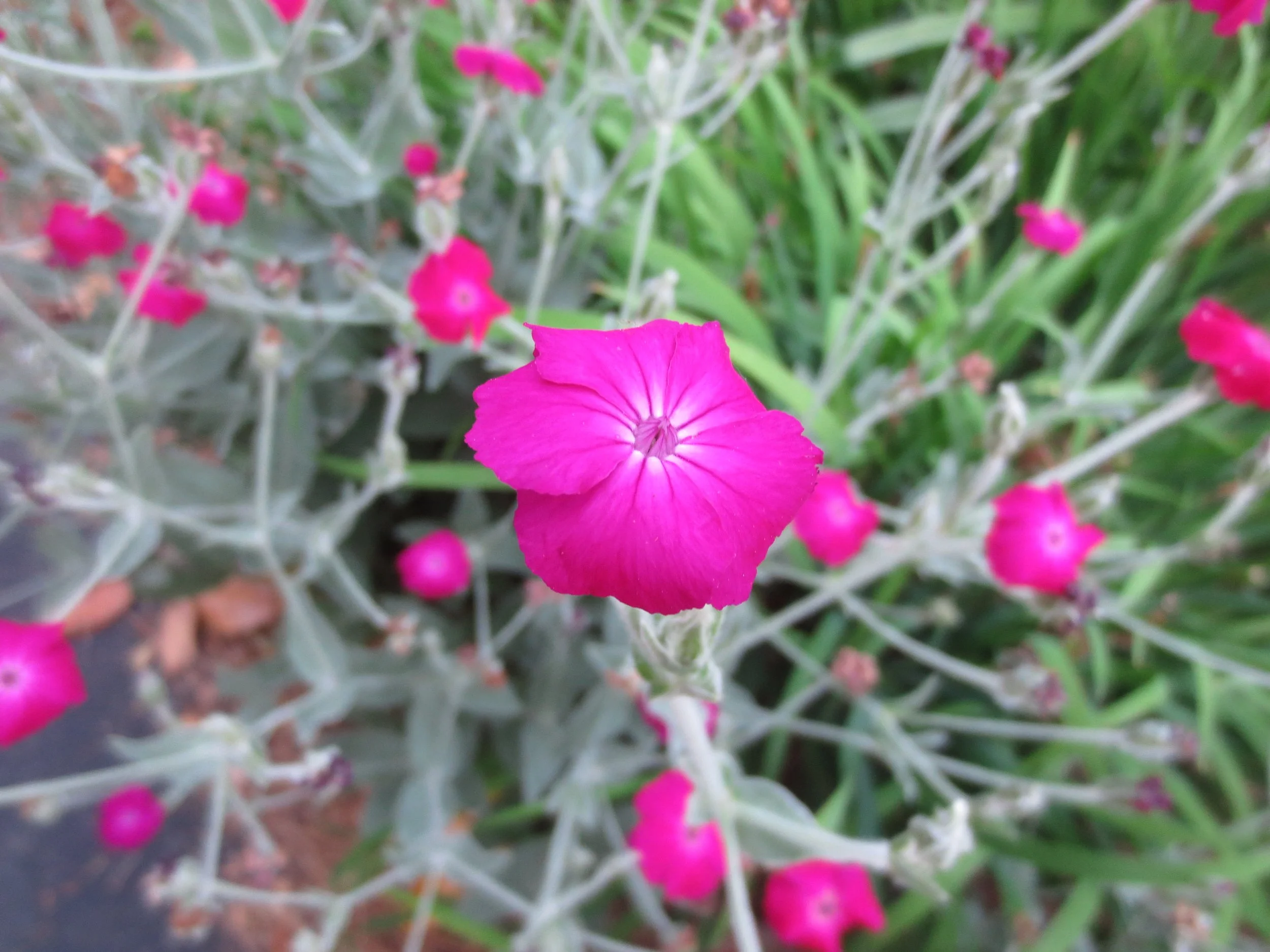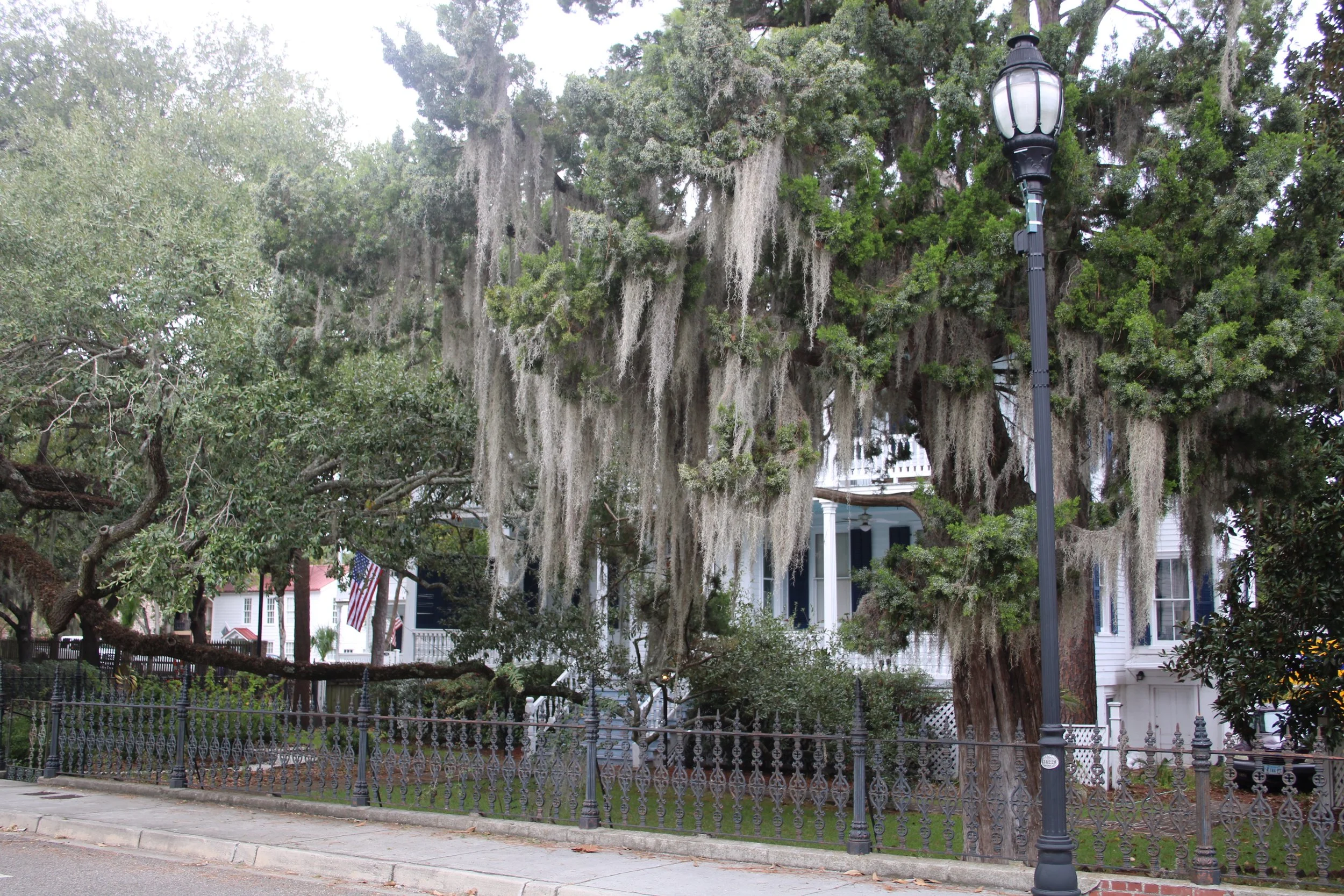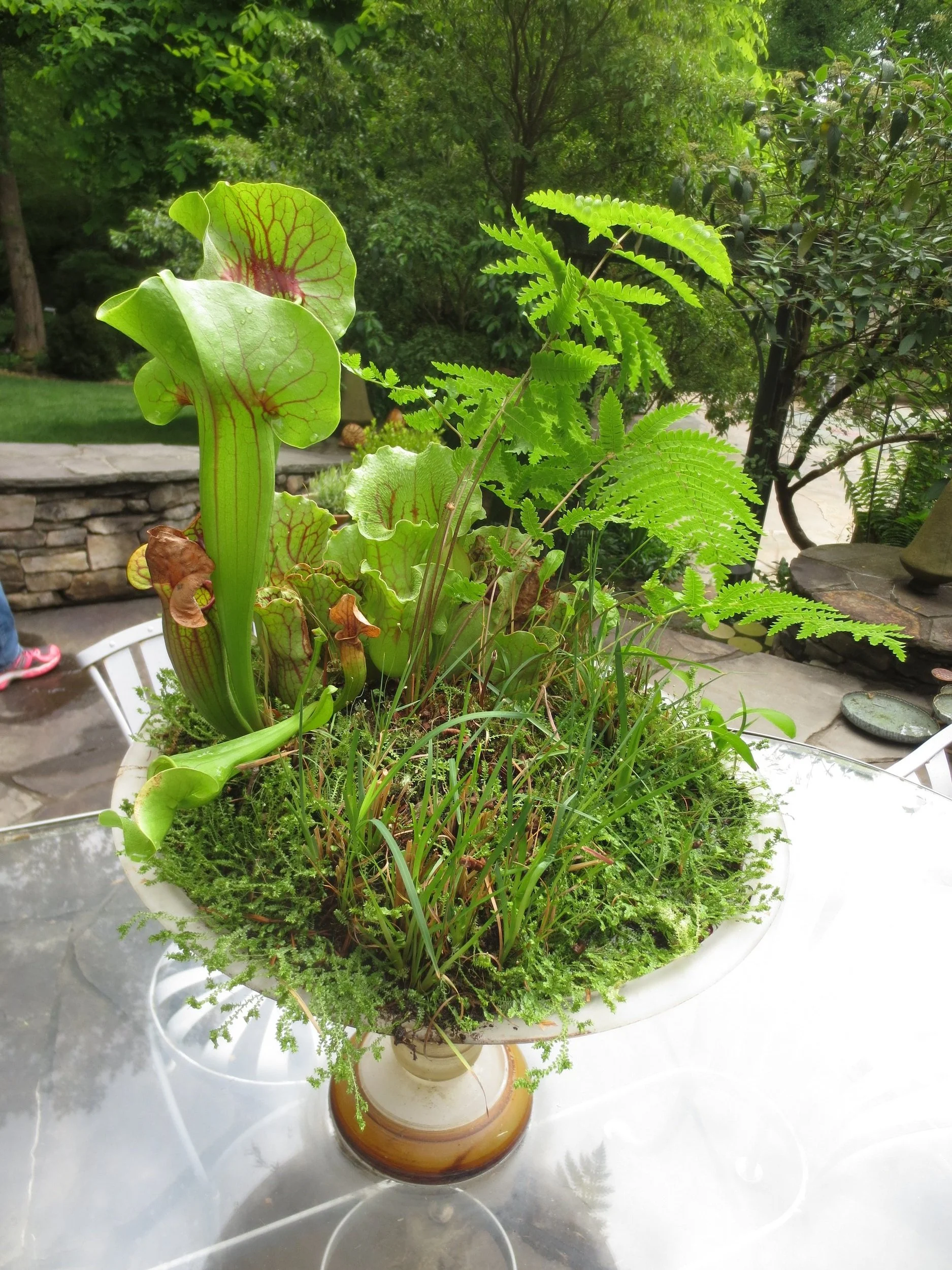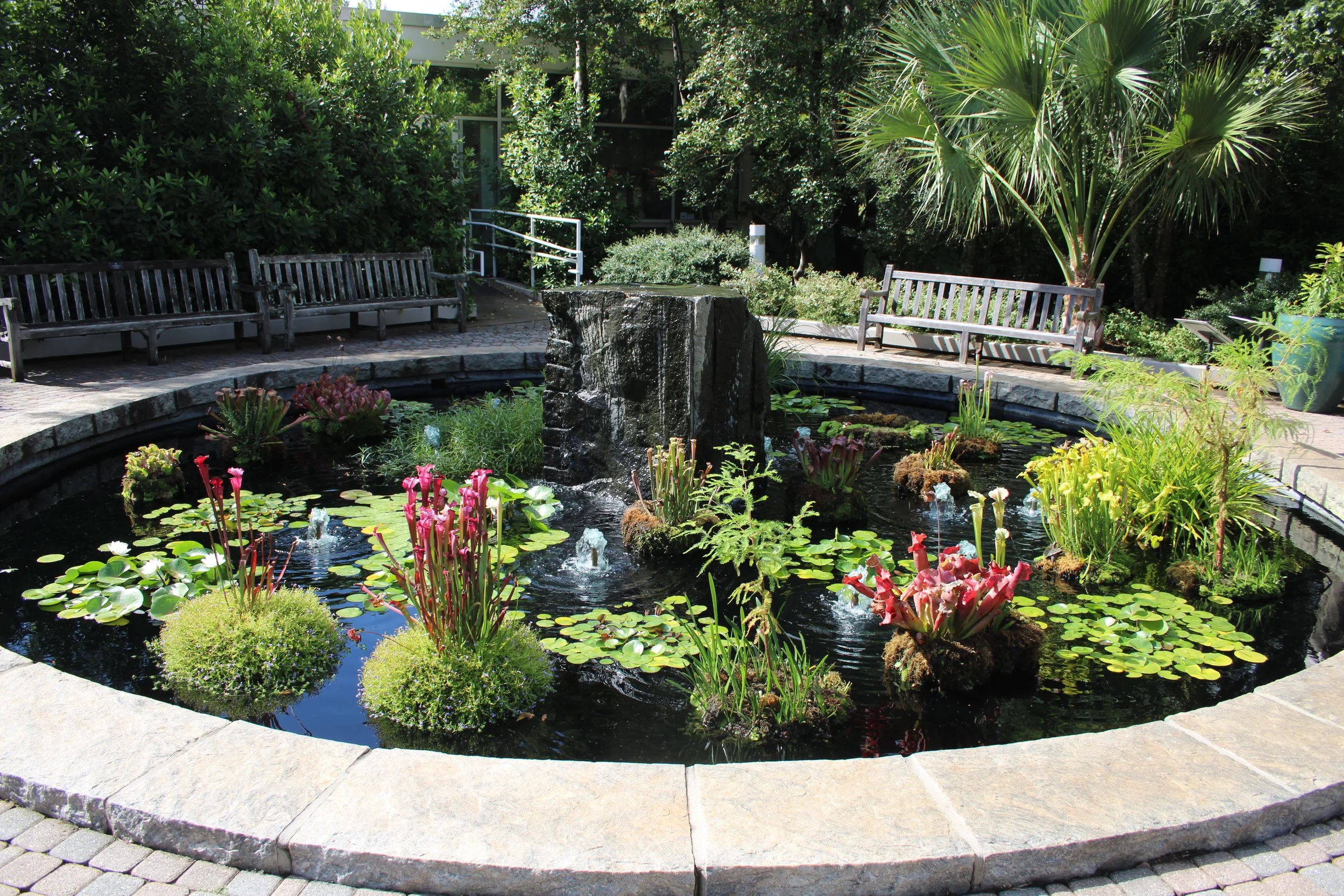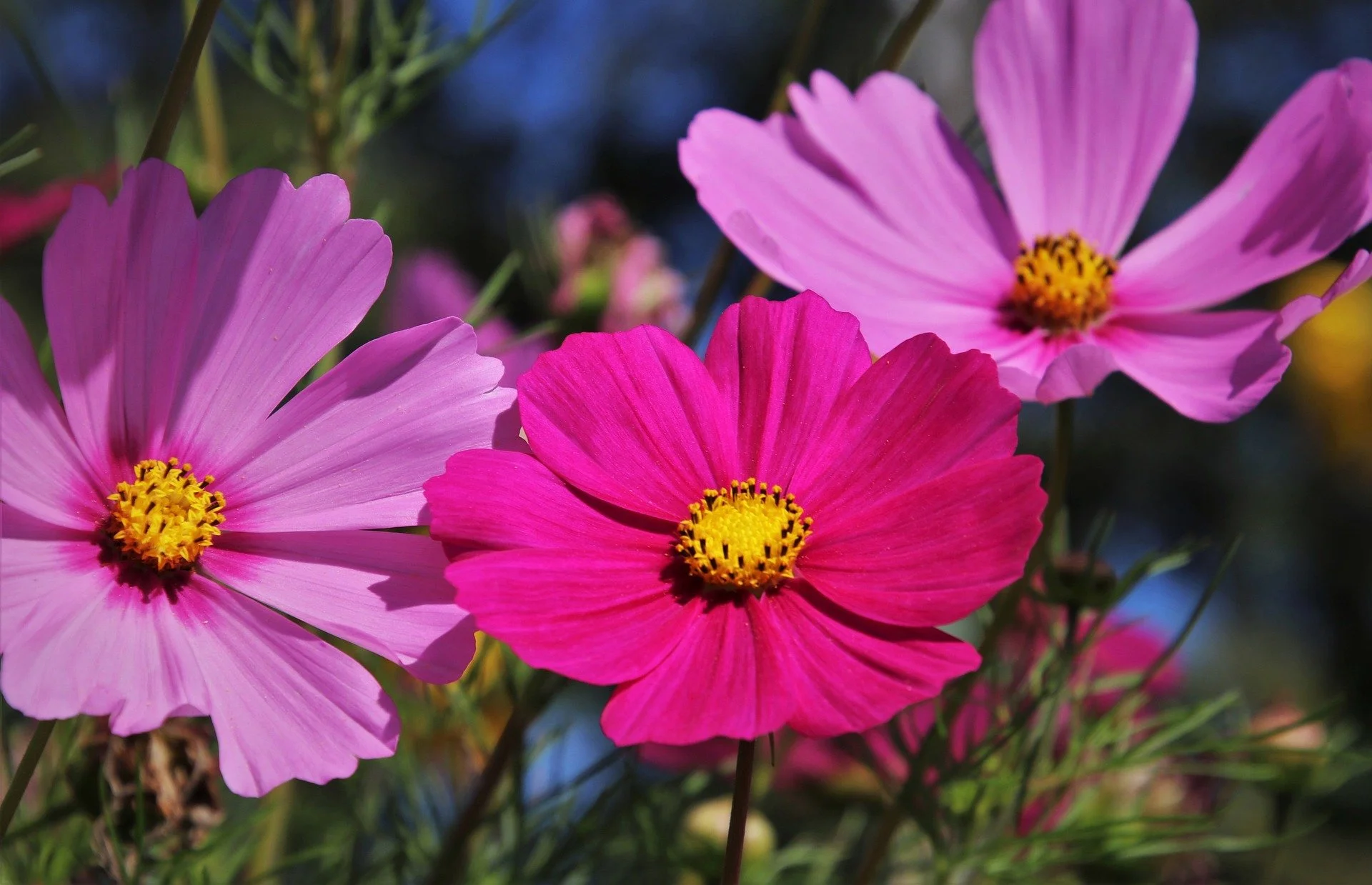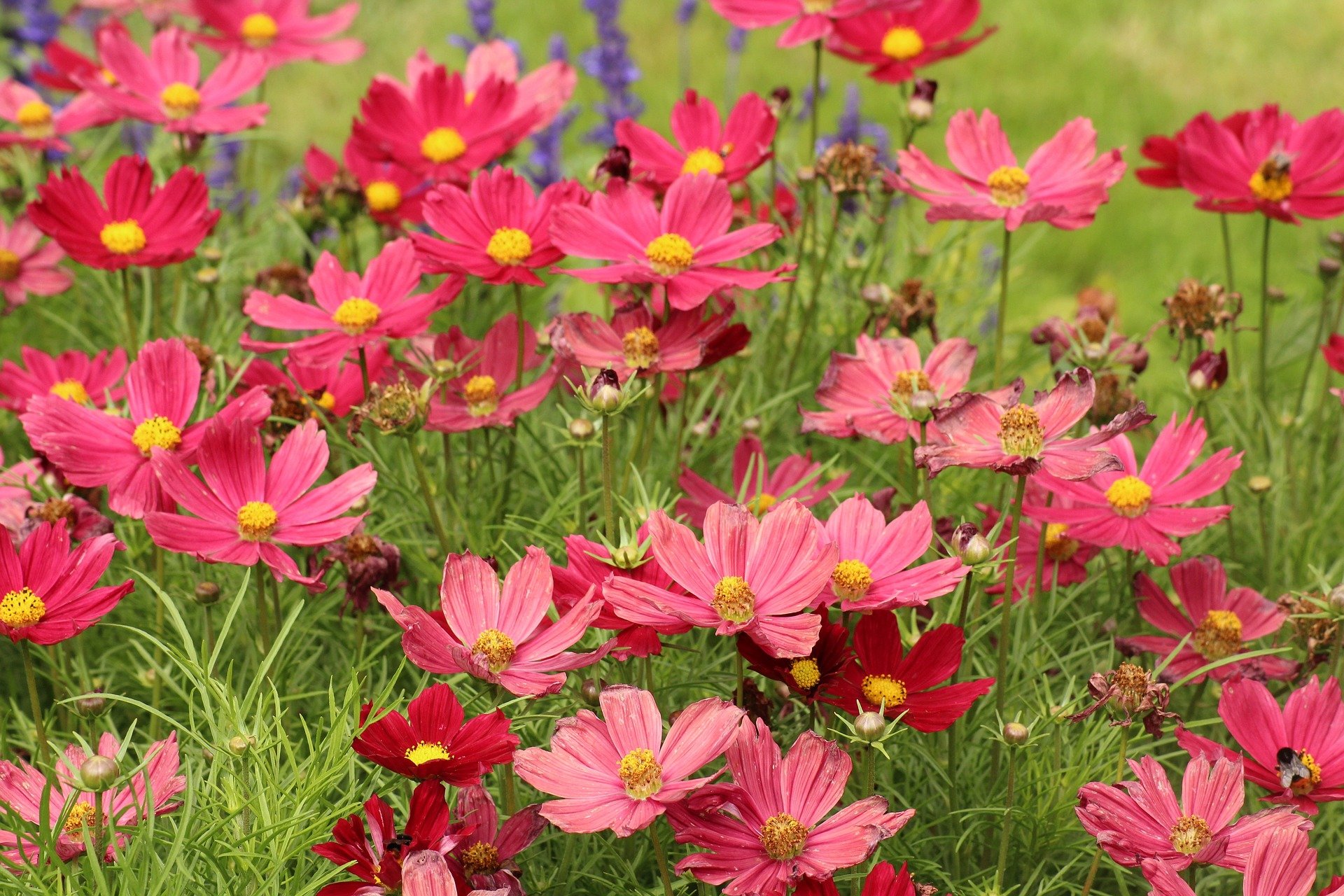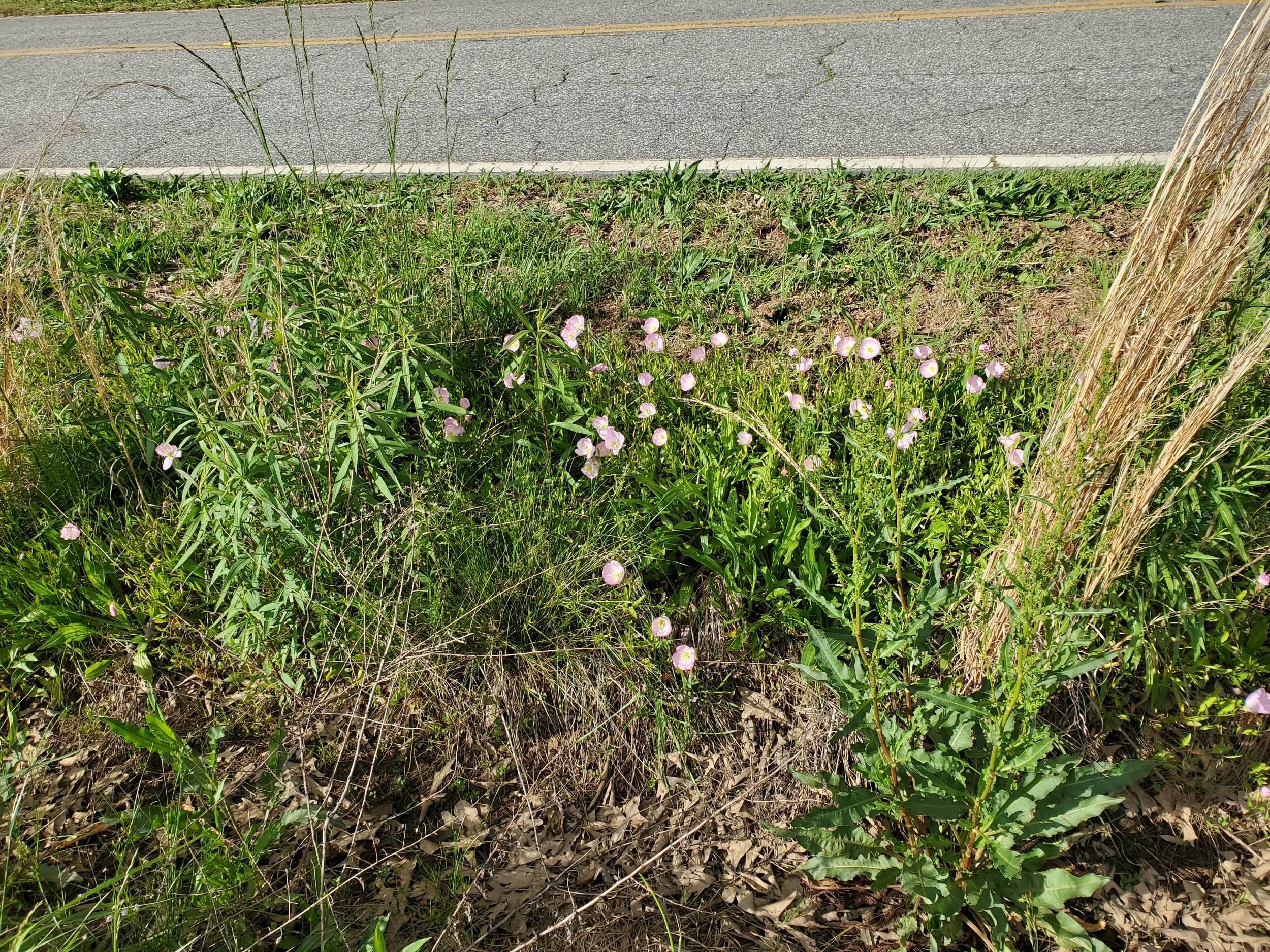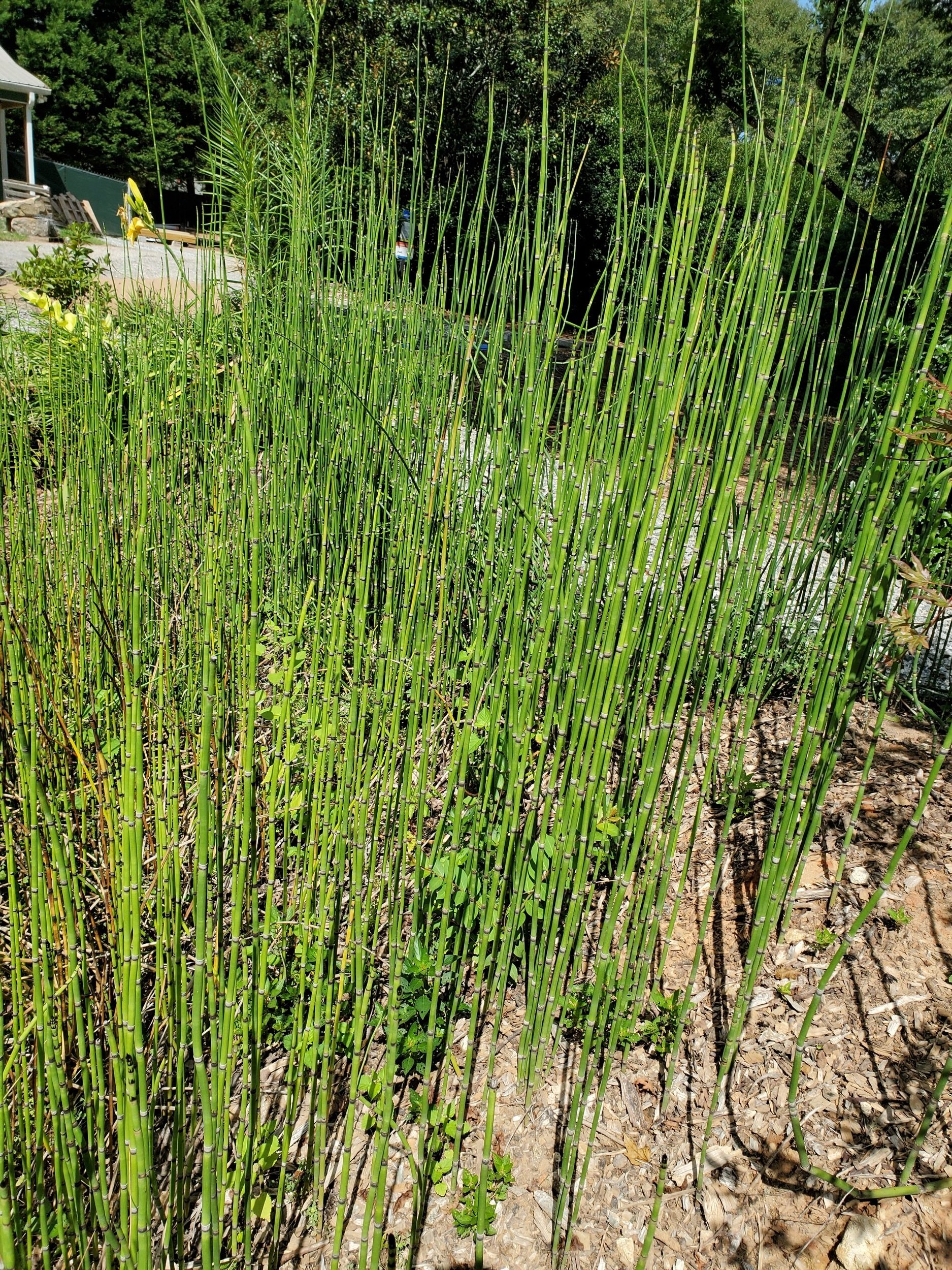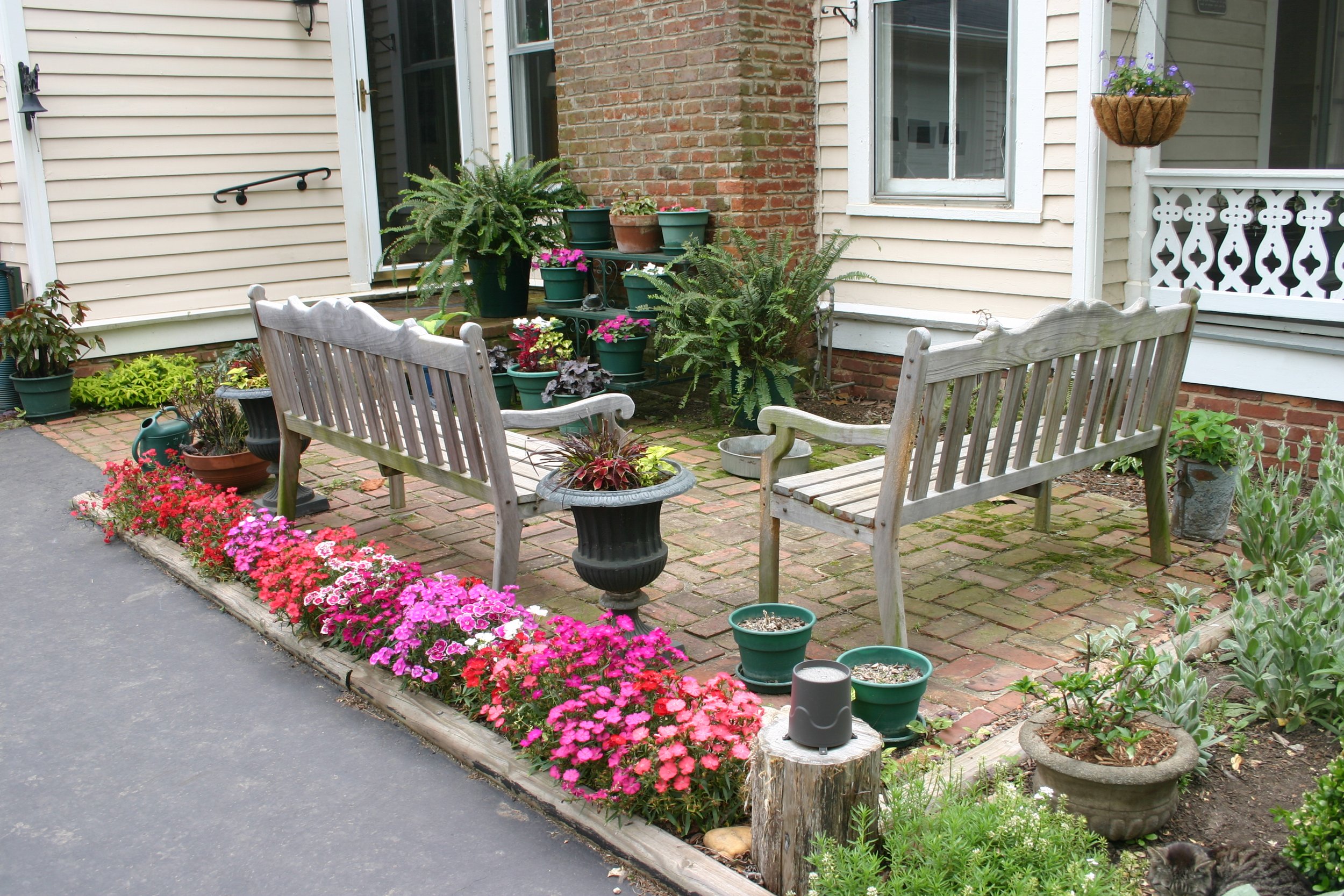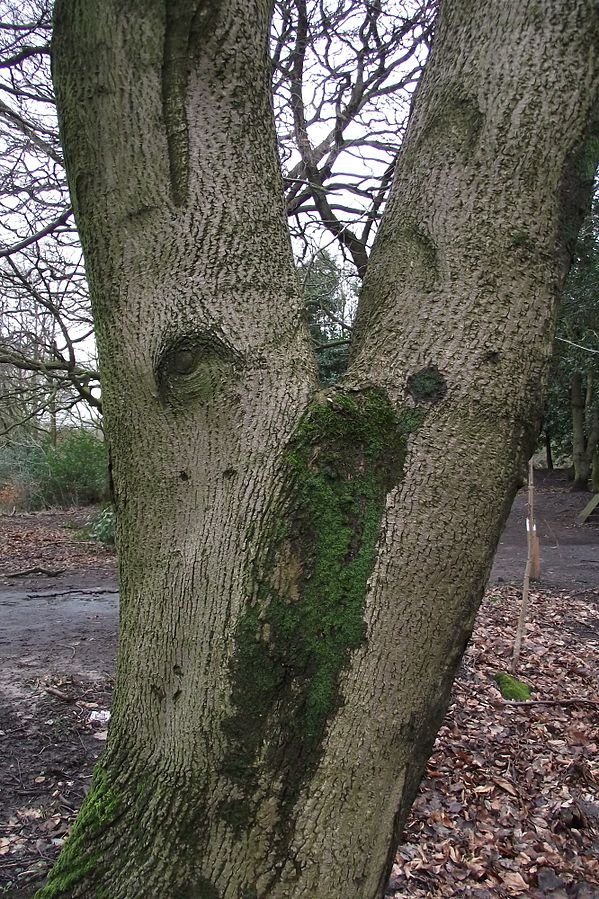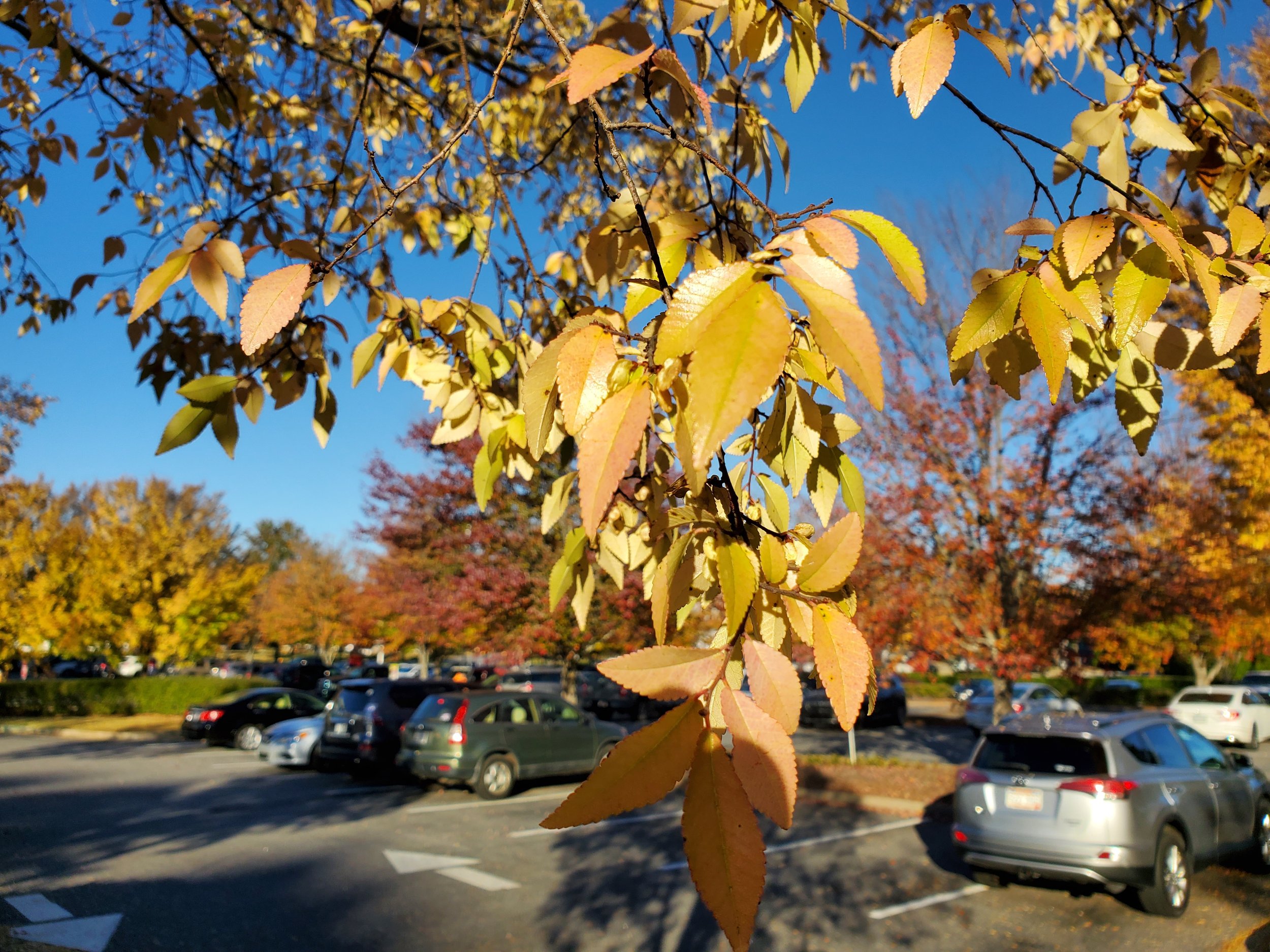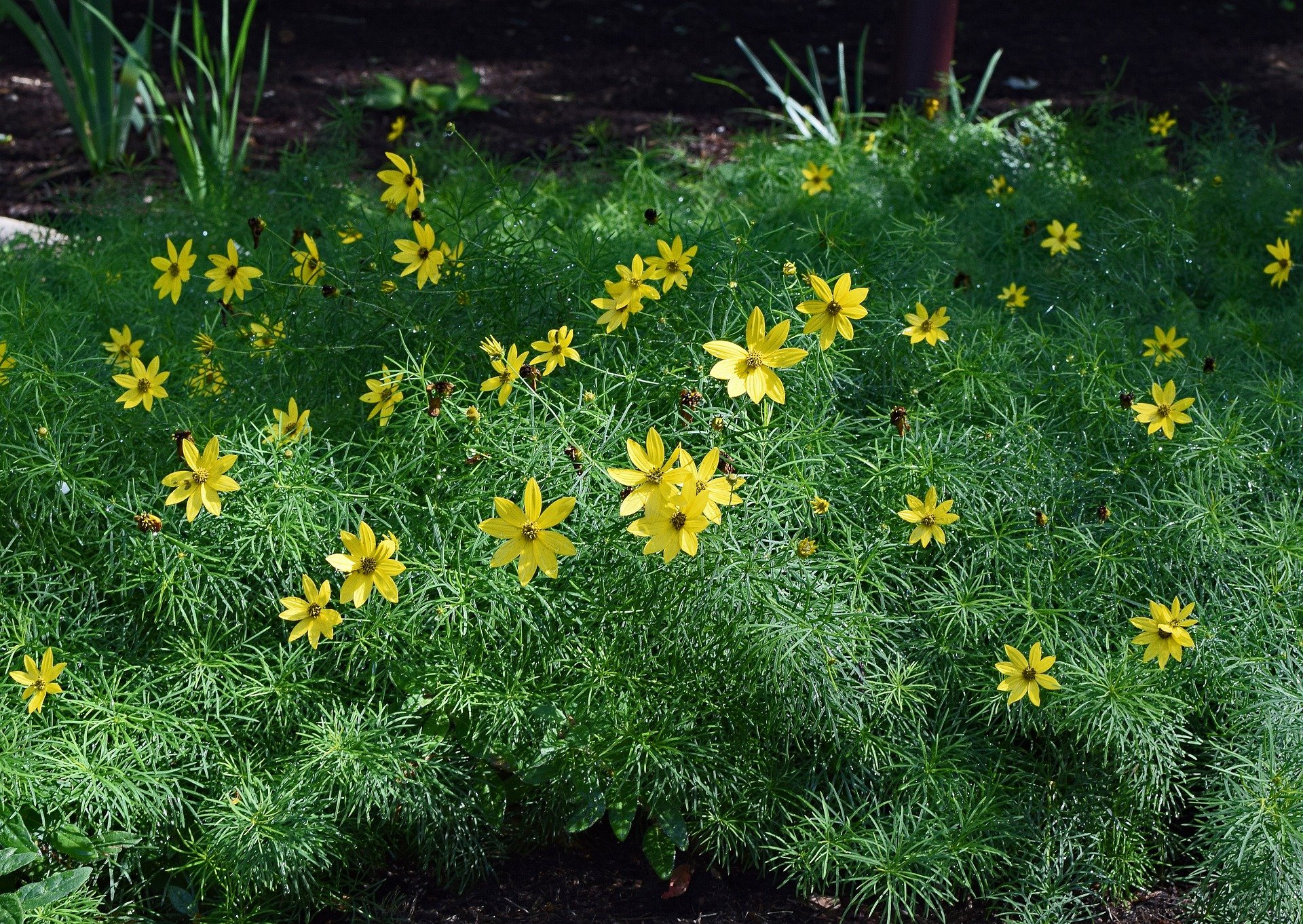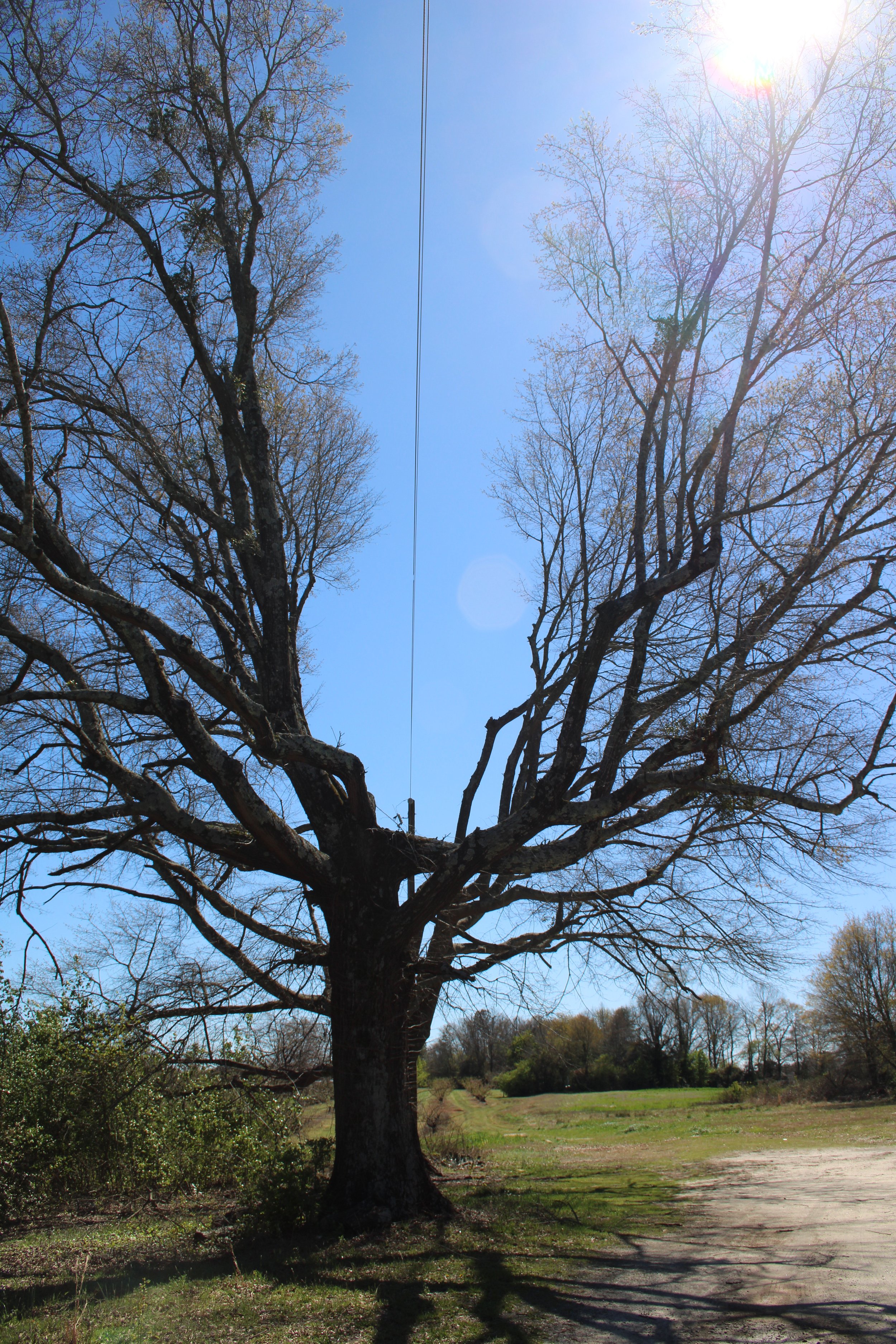Instead of researching information on a horticultural topic, I spent my July 4 evening enjoying several fireworks displays visible from our hilltop. Here is a photo of our last home, New Hope Farm, decked out for the holiday a few years ago. I hope that you and your family enjoyed a good holiday. Ours is a remarkable country. We are lucky to be her citizens.
Cleome, Tall Flowers for the Back of the Annual Border
Cleome (klee-OH-mee) or Spider Flower is a tall plant for the back of the border. Its pink, white, rose or purple flowers open gradually, with the spent stamens developing into long-stemmed seed pods with a spidery appearance. Young palmate leaves mimic Cannabis. Older varieties reach heights of five feet and have sharp thorns hiding along stems to surprise the unwary gardener. Newer cultivars are shorter and have been bred to be thornless.
Cleome grows fast from seed; purchased seedlings may be rootbound and not transplant well. Seeds are best planted in full sun where plants are to grow. Keep seeds moist for three weeks. Plants are heat- and drought-tolerant thereafter.
Cleome reseeds readily but is not invasive. Older stems become leggy and leafless at ground level, so it looks best when planted behind a shorter plant that will hide its base. Older varieties of Cleome flowers have an unusual, lemon-musk fragrance that is more noticeable at dusk. A few people find the scent offensive. Thornless cultivars have lost the scent, too. Flowers attract bees and Sphynx months, large insects that can be mistaken for hummingbirds. Plants are deer-resistant. They look especially nice when planted in large drifts. Self-sown seedlings are often too dense for plants to reach full size. Thin them to a spacing of 12 inches.
To avoid potential for disease, remove plants once they are killed by frost. Rotate plant locations after a few years to avoid attracting harlequin bugs, a relative of the stink bug.
This image shows Cleome buds (top), open flowers (middle) and unripe seed pods (bottom). The long, narrow pods will mature to tan before they burst open to release ripe seeds. Each one of the pods contains 10-15 seeds. Remove the unripe pods if you want to prevent reseeding.
White Cleome pairs well with almost any other flowers
Spanish Moss - Not Spanish, Not Moss
I identify Spanish moss with the South Carolina low country, so I was surprised to find its silver threads adorning a tree at a friend’s (zone 7, upstate SC) back yard cookout last week. As an imaginative kid, I loved the stuff. It had a mystical, spooky quality that conjured up images of Halloween. My mother always warned me away from it, convinced that it housed ticks and other unsavory inhabitants. Not until today did I learn the truth.
Spanish moss is not Spanish. It is native to the southeast and is found from North Carolina to Texas. And it’s not a moss. It is an epiphyte (air plant) in the same family (Bromeliaceae) as pineapple and some succulents. It does not have roots and is not a parasitic plant like mistletoe. It absorbs moisture and nutrients from the air, not host trees. The need for moist air explains why it is found along coastal areas, but it can be grown outdoors in zones 8-11 or even as a houseplant if its need for moist air is met. If given a protected spot, it may survive in zone 7 also.
Spanish moss (Tillandsia usneoides, pronounced til-LAND-see-uh us-nee-OY-deez) has several other common names, including Old Man’s Beard, Grandfather’s Whiskers, and Wool Crepe. It can be used to weave coarse cloth or rope, as packing material for fragile objects, as mulch either outdoors or on houseplants, or in craft projects. While it is not a preferred home for ticks, it does provide shelter for bats, several species of birds, and a rare spider. I observed a pair of Bald Eagles gleaning the moss from a tree in Beaufort, SC. I suspect it was going to become a nest liner for their family. According to Dr. John H. Lienhard at the University of Houston, in past centuries the strands were included in bricks and mortar to make them stronger, were used to fill mattresses, and even used to stuff the car seats of Henry Ford’s Model A.(See https://www.uh.edu/engines/epi2506.htm )
Spanish moss threads are covered with scales (“trichomes”) that absorb moisture and catch dust particles from which it extracts needed nutrients. These scales also keep the plant from drying out. Once the scales die, they become tough, but even dead scales hold fast to each other. Plants rarely reach more than a foot in length. The long, long strands that you see swaying in beach breezes are not a continuous strand but a family of plants hanging onto each other, like a children’s Barrel of Monkeys game.
Plants thrive in full sun to part shade and are intolerant of air pollution. Spanish moss blooms several months in summer and early fall but the tiny flowers in shades of blue or green are easily overlooked. The flowers are fragrant, if you can get close enough to sniff them. While seen most often on oak trees, plants will cling to fence posts or telephone wires.
A stately home in Beaufort, SC is surrounded by oaks festooned with Spanish moss.
This pair of eagles, on St. Helena Island, filled their beaks with the wiry threads for (I assume) nest construction.
Pitcher Plants: Insects Check In, But Never Check Out
Carnivorous plants, especially Pitcher Plants, have long intrigued me. I felt lucky when a local Master Gardener offered to share. (Thanks, Dustan). Thus started the research -- I did not want to kill this plant. What an education! Everything that I know about other plants simply did not apply. I found one website particularly helpful, although the author was somewhat gleeful in his predictions of failure.
Here is a summary of what I learned, in no particular order:
Pitcher Plants are in the Sarracenia (pronounced sair-ah-SEEN-ee-ah) family. Other carnivorous plants include the Sundews (Drosera), Venus Flytraps (Dionaea muscipula), and the rather vulgar-looking Monkey Cups (Nepenthes).
Pitcher Plants can be found in the wild, growing in sunny bogs. This gives the gardener a checklist of their requirements: full sun to mostly sun, and plentiful moisture. Pitcher Plants are endangered or threatened and should never be harvested from the wild. Responsible nature photographers will not reveal the locations of their photos, to avoid illegal gathering.
Moisture needs are specific. Water, lots of it, either rainwater or distilled water. The chlorinated water that comes from our faucets or artificially softened water will kill the plant.
Plants should not be fertilized and should never be given treat insects or other food. Let Mother Nature handle the menu. Pitcher Plants cannot digest fats. Gardeners should never offer them bits of hamburger or other meats.
Pitcher Plant leaves are a hollow tube (the pitcher) with a flap-like lid at the top. The flap has bright veins to attract insects, glands that secrete a sweet, sticky fluid, and downward facing internal hairs to prevent insects from leaving once they are inside the tube. The walls of the tube are smooth, so once the insect has been lured inside for a sweet treat, it falls into the lower pitcher, drowns in digestive enzyme-infused rainwater, and is transformed into a meal. The bottommost portion of the tube is a tiny receptacle for leftover, undigestible insect parts.
Plants go dormant in winter. Gardeners should allow their dead leaves to remain in place until spring before trimming them back to the rosette base with scissors. Blooms are odd looking umbrellas held upside down on wiry stems. The spent flowers take all season to mature into seed pods. Ripe seeds can be sprouted after a period of cold stratification.
Leaf colors may be chartreuse, rose, pink, or copper, and have delicate lines that resembles varicose veins.
Pitcher Plants can be grown as houseplants, outdoors, or in containers. Keep their moisture requirements in mind. They need damp air and soil, even during winter dormancy.
They have some of the strangest common names I have encountered: Sidesaddle Plant, Indian Dipper, Whippoorwill Boots, Huntsman's Cup, Dumb Watch, Frog's Britches.
A fellow gardener who has been successful with Pitcher Plants recommends a mixture of perlite or sand combined with peatmoss as a growing media. Use natural sand from a creek bed. Builder’s sand or playground sand may have been chemically treated to reduce future weeds.
Pitcher Plants grow up to three feet tall and up to two feet wide. They are native to the eastern United States and are cold hardy in zones 6a-8b.
If carnivorous plants are your interest but you are new to them, visit https://sarracenia.com/faq.html as a valuable resource.
Pitcher plants are beautiful in an outdoor tabletop arrangement, but require dedication to water needs.
This image is from a display garden of University of Georgia, taken several years ago. It is what created my interest in growing these unusual plants.
Japanese Maples, Small but Mighty
Japanese Maples are the royalty of the garden, in my opinion. Every one of them is beautiful. Acer palmatum (pronounced AY-sur pahl-MAY-tum) trees are native to Korea, China, Japan, and parts of Russia. They are hardy in zones 5-8. Due to their small stature and slow-growth habit as well as their gorgeous leaf colors, they are much loved in American gardens.
Some Japanese Maples are upright with mature heights up to twenty-five feet, usually shorter. Some have broad, palm-shaped leaves, imitating Sweet Gum or standard Maples. Other have finely cut foliage that is often described as lace-leaf. Some have a strong weeping habit and a mature width much wider than their height. Foliage colors range from chartreuse to pink, salmon, orange, red, burgundy and an endless array of variegations including white markings. In neighborhoods where HOA restrictions prevent front yard fencing, a weeping Japanese Maple forms a nice umbrella shape that can conceal summertime views of your neighbors. All types are deciduous (lose their leaves in winter).
Trees should be planted in dappled shade and well-drained soil containing plentiful organic matter. Direct sun will cause crispy leaves with brown edges. Those with red leaves will tolerate more sun than those with yellow-to-green leaves. These petite trees can be kept small by growing them in containers. They will survive in containers for years if irrigated regularly. While Japanese Maples can be incorporated into borders and mixed plantings, their attractive structure and outstanding colors make them excellent specimen trees, planted alone to draw attention.
Every gardener has their favorite cultivars. Here are mine: ‘Bloodgood’ – one of the oldest, most common, and easily grown trees, with beautiful red foliage. It has an upright form.
‘Tamukeyama’ – a weeping red lace leaf. It is late to leaf out, so is not damaged by late freezes.
‘Shishigashira ’ – also called the Lion’s Head Maple. In spring, it produces bright green, crinkled leaves. Its dense form gives it an architectural quality I love, and the fall color is yellow with a hint of orange. It will tolerate more sun than some, and is a good choice for bonsai.
‘Mikawa Yatsabusa’ – has a dense form like Shishigashira, but its green leaves emerge on red stems.
‘Shaina’ – one of my two latest acquisitions. The one I saw on a spring garden tour had peachy leaves, almost the same color as the terracotta pot in which it grew. The one I purchased (described as red) has a mixture of red, green, and peach leaves. Trees raised in greenhouses sometimes don’t reveal their true colors until planted outside. I can’t wait to see what develops. ‘Summer Gold’ – the other new purchase, has a yellow leaf with red edges. It was described as heat tolerant. Seller indicated that it could be grown in full sun without leaf scorch. We shall see.
As with other tree purchases, it pays to research mature sizes, growth habits, and special requirements before one goes shopping. I recently attended the open house of a Japanese Maple nursery that is normally a catalog-only resource (Mr. Maple, located in Flat Rock, North Carolina). It was heavenly to be surrounded by thousands of these gems. I wanted one of everything, but I managed to show restraint because of my prepared shopping list.
The beautiful limb structure of Acer palmatum
Japanese maples incorporated into a mixed border, early spring.
The dense, umbrella form of a weeping Acer palmatum can block unsightly views.
Japanese Water Iris fills a Gap
Daffodils and bearded Iris have long faded, and summer annuals are approaching their peak, delayed by this year’s unusually cool spring. In the interim, Iris ensata is putting on a show. Large, flat flowers on strong, thin stems float above narrow, strap-like foliage. Mention “Iris” and most people think of the bearded types, or Siberian, or the petite, crested variety. Showy Iris ensata deserves wider appreciation.
Iris ensata is also called Japanese Iris or Japanese Water Iris. It prefers damp soil and will even tolerate brief periods of standing water, but it is tolerant of average moisture. Like bearded Iris, Japanese Iris arise from fat rhizomes. Unlike their beaded cousins, they prefer to be planted with the rhizome vertical. They want full sun and an acidic soil, and are winter hardy in zones 5-9. Most varieties have blue or purple flowers, but a few are pink or white. While they have standards and falls, the flattened flowers remind one of a large butterfly. They do not have fuzzy beards. When in bloom, the stems can rise to 3-4 feet.
Iris ensata flowers have a long vase life. Plants are deer resistant. Introduce a few of these bulbs to the mixed border, where the summer flowers can be enjoyed over shorter companions that will hide the unremarkable foliage when they are not in bloom. Divide every 3-4 years to maintain good flowering.
Iris ensata ‘Pinstripe’
These were a passalong gift from a gardening friend. They live happily along a creek bank that floods occasionally.
Cosmos - Perfect for a Child's First Garden
Cosmos is a beautiful and easy-to-grow flowering plant known for its bright and showy flowers. Cosmos bipinnatus (KAHS-mos bye-pin-NAY-tus) come in shades of white, pink, rose, red, burgundy and bicolors. Cosmos sulphureus (KAHS-mos sul-FER-ee-us) are shades of yellow and orange. Cosmos are heat lovers, native to Mexico and Central America. Plants have fine, ferny foliage that grow to heights up to six feet.
They are easy to start from seed and are an excellent choice for introducing children to gardening. Wait until soil has warmed, then scatter seeds where they are to grow and sprinkle with a little soil or rake lightly. Do not cover too deeply. Keep soil moist until germination occurs. Established plants are drought tolerant; they do not like to be overwatered. Plants readily self-seed.
Avoid planting in areas with strong winds or they may require staking. Should tall plants flop, they can be cut back to 12-15 inches and will rebloom in a few weeks. Cosmos attracts bees, butterflies, and hummingbirds, making it a great choice for pollinator gardens.
Learning the Buckeye Lingo
Two weeks ago, I shared a recent learning experience, the distinction between Alocasia and Colocasia. This week, I want to share another step in my horticultural education.
I always admire a Red Buckeye tree, Aesculus pavia, when I see it in other people’s gardens. White Bottlebrush Buckeye, Aesculus parviflora, is a handsome short tree/tall shrub with fluffy white flower clusters, but it is the Red Buckeye that makes my heart beat a little faster while I mentally add it to my Plant Lust List. Last summer, I noticed two different types of blooms. Some were tubular, while others looked almost like Crepe Myrtle. The leaves between the two were indistinguishable (to me) from each other. Time for some research!
Here is my knowledge breakthrough on the Aesculus (pronounced ES-kew-lus) family. The tubular flowers belong to Red Buckeye. The crepe paper flowers are on Red Horse-chestnut, which is actually a cross between Red Buckeye and Horse Chestnut.
Aesculus pavia, Red Buckeye, is native to the southeast. It is hardy in zones 4-8. It prefers moist soil and partial shade, and will attain heights up to twenty-five feet.
Aesculus parviflora, Bottlebrush Buckeye, is a multi-stemmed native shrub that is hardy in zones 4-8. It prefers moist soil and partial shade or dappled shade under taller trees. It grows to twelve feet or less.
Aesculus x carnea, Red Horse-chestnut, is native to Europe. It is hardy in zones 4-9. It is much taller than the other two, growing to forty feet. It is also tolerant of occasional dry soils and will accept more sun.
All three produce nuts that are toxic to humans and pets.
My Least-Favorite Plants
One of my regular blog readers asked if there were any plants that I DON’T like. Well, yes, there are a few.
Cortaderia selloana - Pampas Grass
Pretty from a distance. Up close, the razor-sharp leaf edges slice one to shreds. When it is time for the fall cutback, get out the meat-handlers metal mesh gloves and protect all skin.
Pampas Grass
Houttuynia cordata ‘Tricolor’ - Chamaeleon Plant
This spawn of Satan will spread out of control almost immediately upon touching soil. The crushed leaves smell awful (other common names include Dog’s Breath). I volunteered to help a friend remove this from her garden. It involved lots of digging and multiple applications of herbicide. After three months of vigilance, we thought the battle was won. A few months later, we found a piece that has snaked its way under a nine-foot width of concrete to encroach on her lawn.
Chameleon Plant has another common name, “Dog’s Breath” to describe the odor of its crushed foliage.
Oenothera ‘Siskyou’ - Pink Evening Primrose
Impossible to eradicate. No matter how many times you pull it out, seedling pop up everywhere. When I worked in a garden center, customers would describe themselves as Plant Killers and ask for something un-killable. I blush to think of the number of times I placed one of these in their hands and assured them, “This plant will grow on a concrete block.” I hereby apologize to all you victims.
Pink Evening Primrose magically appears in unlikely places — like this roadside ditch alongside a highway.
Yucca
Needle-like points at the ends of the leaves draw blood when you swear you were at least ten feet away. I have mowed over these, dug out roots, sprayed herbicide, and done everything else in my gardener’s Box of Tricks to remove several of these that were planted by my husband’s grandmother. We finally moved. I expect to see a news item any day now where one popped through the concrete foundation of an apartment building that was erected above.
A flowering patch of Yucca, just waiting to draw blood.
Equisetum - Horsetail Rush
Prehistoric plant that should have died along with the dinosaurs. It is scratchy and coarse. Some gardeners find it attractive. To those, I say “keep it in a container” or you will be grubbing it out of your garden for the remainder of your life. It did not survive by being delicate.
Horsetail rush, a prehistoric survivor.
Vinca
Not an evil plant, but it spreads enthusiastically. Stems root wherever nodes touch soil. At my former home, a previous owner planted it against the foundation. At first, it concealed the brick under a lovely green screen, populated with blue flowers. It soon became a snake haven with the need for almost weekly trimming. This was one of the very few occasions in which I resorted to herbicide to eradicate a plant. I pulled all the dead stems and tossed them into the woods…where they came back to life and took over a half-acre while I was not watching. It is deer resistant.
Elephant Ears - Alocasia or Colocasia? Does it matter?
Elephant Ears are big, showy plants grown for their exotic, tropical-looking leaves. Some are labeled Alocasia and some are Colocasia. What’s the difference? Inquiring minds want to know.
The easiest way to distinguish the two is to look at the leaf tips. Colocasia leaves point down. Alocasia leaves point up or appear horizontal. When plants are young, leaf direction can be difficult to determine. For a baby plant, take a look at where the stem connects to the leaf. Colocasia stems are located at the notch on the rounded end, sort of like the topmost portion of a heart shape. Alocasia stems appear to be an extension of the strong rib that runs the length of the leaf. Fun fact: Neither plant has stems. What appear to be stems are actually part of the leaf itself.
Colocasia leaves usually have a matte finish. Alocasia leaves are shiny. In general, Colocasia leaves are larger than Alocasia. Colocasia can grow to 10 feet tall. In some parts of the southeast, they have earned a reputation for invasiveness. Elsewhere, cooler temperatures keep plants in check.
It is important for the gardener to know that water needs are different between the two. Colocasia likes it wet. It will thrive in a boggy area, and is especially well-suited for pond-side gardens. Alocasia likes moisture, too, but it prefers a fast-draining soil without standing water. Too wet a soil will lead Alocasia corms to rot.
Colocasia likes sun but in intense southern sun, it prefers morning sun only and afternoon shade. Alocasia is more delicate. It likes indirect bright light and will blister if located in direct sun.
Plants rarely flower. If they do, Colocasia has a yellowish green flower, while Alocasia’s is white or cream. Flowers are not showy: a spadix surrounded by a papery spathe, visually similar to Caladium.
Alocasia is only cold-hardy in zones 10 are warmer. They are typically grown as annuals, as houseplants, or in outdoor containers that are brought inside during cold weather. Colocasia is cold-hardy in zones 8 and warmer. In a protected area and with a deep, lightweight mulch, they may survive winter in zone 7b also.
Despite the cooking preparation instructions found on the internet, all parts of both plants are highly toxic. Improper preparation can result in death. It is better to avoid eating them. People with sensitive skin should wear gloves when handling bulbs and leaves, since they can cause dermatitis.
Traditional Gardenia for Fragrance Gardens
Gardenia jasminoides (pronounced gar-DEE-nee-ah jaz-min-OY-deez) was previously known as Gardenia augusta. Native to Asia, it is one of the south’s classic shrubs. Gardenia shrubs thrive in heat and humidity, and require acidic soil. We have all three! They have a long flowering period, with single or double flowers than range from white to cream to almost-yellow.
Plant new Gardenias in spring so they will be well-established before the onset of cold weather. They prefer moist soil with plentiful organic matter, and partial or dappled shade, zones 7-11. Mature plants may reach heights up to eight feet. Several shorter cultivars are available, as well as some (‘Kleim’s Hardy’ and ‘Frostproof’ are two) that are more cold-hardy. Gardenia’s shallow roots dislike disturbance. Locate them away from trees or areas with strong winds. Avoid planting them next to concrete driveways or sidewalks that may leach lime into the soil. Use an acid-based fertilizer specifically formulated for Gardenias or Azaleas. Prune Gardenias in late winter or early spring to remove any dead or damaged branches. This will encourage new growth and keep the plant looking healthy.
Gardenias can be used as an evergreen hedge or as specimens in fragrance gardens or moonlight gardens. While their glossy leaves and sweet-smelling flowers can make them the star of summer garden tours, spent blooms fall to the ground and can look messy. Remove them for the neatest appearance.
Despite their heavenly fragrance, Gardenia does not make an ideal cut flower. Flowers react poorly to the touch of human skin, and their pristine white petals take on the yellow tint of old mayonnaise. If you choose to use them as cut flowers, take care to avoid contact between skin and flower petals.
Gardenias are susceptible to a number of pests and diseases, including scale insects, whitefly, mites, and root rot. Sooty mold is a frequent problem. Keep an eye out for any signs of infestation and treat promptly to keep your gardenia healthy. They are prone to damage by deer. While Gardenia can be grown as a houseplant, whitefly is a common problem.
Clematis - Showy Vine for Trellis, Container, Groundcover
Clematis (pronounced CLEM-ah-tiss) is a popular flowering vine. There are many species and hundreds of cultivars, with new hybrid introductions coming to nurseries every year. Most are deciduous but fragrant Clematis armandii is evergreen. Most have large, showy, colorful, flat , single or double flowers. A few have hanging bell-shaped flowers, while others have strap-like petals. Try to purchase a new vine while it is in bloom to confirm the color. The label will likely provide pruning recommendations appropriate for that variety.
Clematis tolerates a variety of soil types but prefers a moist, alkaline soil, so be prepared for a light application of lime every fall if you garden in an acid-soil location. They are weak climbers and will look best when secured to a trellis with soft twine. They can also be grown in containers or allowed to scramble along atop the soil.
Clematis cultivars vary in mature size. Typical size is six to twelve feet, with a few extending to thirty feet or more. There are three main classes of Clematis.. Type dictates the pruning method. Type I vines flower in early spring on wood produced in the prior year. They should be pruned immediately after flowering to spur new growth for next year’s flowers. Type II are repeat bloomers that flower on both old and new wood. Cut out dead wood in spring, deadhead throughout the season, then prune again after most flowering has subsided. Type II can be pruned drastically if vines have become overgrown. Type III vines flower later than the first two groups, in late summer and fall. They bloom on both new growth and old growth. Pruning is optional for this group, but vines will be much more attractive if they are pruned down to 12-15 inches in early spring.
Clematis like to grow with “their heads in the sun and their feet in the shade,” which sounds daunting but can be accomplished with a thoughtfully placed large rock, gravel, container, or groundcover plant. Best flowering occurs with at least half-day sun. In the deep South, protect plants from scorching afternoon sun to prevent crispy leaves and faded flowers.
Two of the most widely grown Clematis are ‘Jackmaii’ (vigorous grower with large, flat purple flowers) and ‘Henryi’ (large, flat, pure white flowers). ‘Rooguchi’ has a downward-facing purple bell-shaped flower. Though it is not as eye-catching as the flat-flower types, it is popular because it reblooms freely over several months. Seed heads are interesting pinwheel tufts of fuzzy threads.
All parts of Clematis are toxic to humans and animals.
Purple ‘Jackmanii’ is one of the most popular varieties of Clematis.
Clematis seeds look like fluffy pinwheels.
Dianthus or Cheddar Pinks
Cheddar Pinks or Dianthus are fragrant, summer-flowering plants with gray-green or blue-green foliage that closely resembles Carnation, to which it is related. Flowers are long-lasting and come in shades of pink, lavender, purple, white, and bi-colors. The blooms are held above the foliage on strong, narrow stems. ‘Bath’s Pink’ and ‘Firewitch’ are two of the best cultivars.
Dianthus, pronounced dy-AN-thus, is hardy in zones 4-8. Mature height, even when in bloom, is twelve inches or less. They prefer full sun with light shade in the afternoon. Their spreading habit makes a good groundcover or container plant, where they will spill gracefully over the rim. One of the prettiest combinations I have witnessed was the use of Cheddar Pinks as a groundcover underneath an upright Coal Bark Maple (Sango Kaku).
Cheddar Pinks must have good drainage to prevent root rot. They prefer a neutral to slightly alkaline soil. Pinks looks best in mass plantings. If allowed to spread into each other, a full bed of Dianthus resembles a gray carpet. They are also effective when spaced further apart and used as a bed edging.
The flowers attract bees and butterflies. Cheddar Pinks are a good choice for pollinator gardens and rock gardens. They will tolerate limited drought and are moderately deer resistant. Plants are toxic to humans and pets.
A close view of Dianthus, commonly called Cheddar Pinks or Clove Pinks.
A border of assorted Dianthus in a tiny strip between brick and asphalt
These Dianthus are just starting to flower (mid-April, in western NC) but you can clearly see the similarity with florist Carnations.
Split Leader Trees - Avoid them or fix them
I was yearning to say, “No – not that one” to a person who was in front of me in the check-out line at a local garden center. After scanning the rest of the trees on her flatbed cart, I realized that every single tree had the same serious problem. I call it “split leader” but arborists label it “co-dominant stems.” Whatever you call it, it means trouble ahead.
Split leader occurs when two mostly-vertical branches of nearly the same size emerge from a tree’s trunk at the same point. The tree looks like a sling-shot. The proper name for this is bifurcation. Unless you take care of the problem when the tree is very young, the two branches will compete for dominance. As they grow, the bark of the branches will squeeze each other, resulting in a pinched or wrinkled bark that looks like loose elephant skin. This is called included bark and indicates a weak point in the structure. In years to come, these two competitors will part ways – the tree will split, and one half will go down while the other half celebrates an ugly victory. The much-maligned Bradford Pear tree is famous for this problem. You’ve probably seen plenty of them, split asunder, after storms or high winds.
Corrective pruning can remedy this problem on young hardwood trees. The gardener should select one of the two co-dominant branches for partial reduction. Do not attempt to remove the entire limb at one time unless the tree is a young sapling. Instead, cut it back by half and then reduce it even further in another year. This gradual reduction is called subordinating and it serves to slow the growth of the pruned limb. For larger trees, it may take multiple years of pruning to ensure that the tree has one central leader.
The split leader problem is harder to correct when the troubled tree is a conifer. While hardwoods adapt to pruning by activating dormant buds along branches, a needled evergreen is less accommodating. It does not “break bud” or generate new branches from brown wood. This means that removing a split leader will leave a gap in the tree which will remain obvious. The tree won’t fill in. So please, select those Arborvitae and Leyland Cypress with care. A strong central leader will help them resist damage from ice and snow.
This is a Norway Maple with co-dominant leaders. It is far too late for corrective pruning. A split is on the way.
Photo by Duncan R Slater, CC BY-SA 3.0
This conifer has a three way split leader. The two outer leaders should have been removed when it was less than two feet tall.
Lacebark Elm Trees - Lovely Bark
I fell in love with a parking lot tree last year. It had the most amazing bark, with an exfoliating habit that revealed tan, cinnamon, and gray patches all at once. The fall color was gorgeous, showing yellow, orange, and rust all at the same time. I’m watching that tree leaf out this spring, and nothing has dampened my affection. The tree in question is a Lacebark Elm, Ulmus parvifolia.
Lacebark Elm makes a good street tree. The one that caught my attention last year is among a group of twenty or so located in planting islands in an asphalt parking lot. They are known for their tolerance for heat and air pollution. They are easily moved, and adaptable to any soil type, acidity, and moisture level. Trees are hardy in zones 5-10. The parking lot trees that caught my attention are U. parvifolia ‘Drake.’ Plant them in full sun to light shade.
Mature Lacebark Elms will reach to 50 feet in height and width. Several dwarf cultivars are available. Their flowers are insignificant, but their seeds are samaras – papery, winged seeds that float in a circular pattern and make one want to play “helicopter.” Those seeds, while pretty and fun, are a downside. They are messy and seem to sprout everywhere if they land on mulched areas. This is not an issue in an asphalt parking lot, but it might cause problems in a home garden location.
Lacebark Elm has slightly weak wood, so locate them where they will not be bombarded by heavy winds. It is resistant to Dutch Elm disease, elm leaf beetle attacks, and Japanese beetle damage.
Early fall color of Lacebark Elm
Trunk colors of Lacebark Elm
Lacebark Elm showing off its early spring leaves. They will darken to a deeper green in another month.
A "Pot of Gold" for the Garden - Coreopsis
Coreopsis (pronounced kor-ee-OP-sis) is a group of native perennials with bright, daisy-like flowers and a clumping habit. Most Coreopsis have yellow flowers, but hybridizers have introduced new cultivars with flowers of burgundy, rust, red, or bi-colors. ‘Moonbeam’ and ‘Zagreb’ are two of the best yellows. Coreopsis verticillata has a narrow (“threadleaf”) foliage.
Locate plants in full sun or mostly sun, in well-drained neutral or acidic soil, zones 3-9. Plants attain heights of two to three feet. Individual Coreopsis flowers are small but the plant will cover itself, putting on a show. The size of the flowers make deadheading tedious. Once most flowers have faded, use clippers or hedge-trimmer to decapitate the spent blooms and their stems. Plants will regenerate and rebloom.
Coreopsis tolerates heat and humidity. They attract pollinators but not deer. Their airy appearance makes them a good choice for a cottage garden, a native garden, or children’s garden.
Coreopsis verticllata, Threadleaf Coreopsis
Look Forward, Gardeners
With spring’s approach, gardeners are ready to wield their spades. One of the most common requests is “something for privacy.” Gardeners are not unfriendly people — we just don’t want to see quite so much of our neighbors and vice versa. Dense and fast-growing, Leyland Cypress and White Pine are two trees commonly chosen for a privacy screen.
Before you purchase or plant, please take a hard look at the intended location. White Pine, Pinus strobus, grows two or more feet each year, with a mature height up to 150 feet and a 20-40 foot spread. Leyland Cypress, Cupressocyparis leylandii, is a hybrid between Monterey Cypress and Alaska Cedar. It grows three to four feet per year, with a mature height of 70-100 feet and a 20-foot width.
Sadly, the popularity of these two screening trees leads people to plant them where they do not belong: under utility lines, too close to neighbors’ yards, or too close together. In a few short years, utility companies do what they must do to keep pumping the juice to our homes. It is not the fault of the utility workers. If they don’t prevent limbs from falling into their lines, they are eviscerated when homeowners lose power, telephone, or internet during snow or ice storms. Necessary trimming sometimes results in ugly, deformed trees. The people screaming the loudest during outages are sometimes those who would not allow tree trimming on their property.
Leyland Cypress should be planted 20-25 feet apart. Trees which mesh together will shade each other, resulting in dead brown needles and dropped lower limbs. A too-close planting invites dieback, blights, cankers, and damage from bagworms. A heavy bagworm infestation can kill a full-grown tree.
Whether it is the two trees described above or any other trees, please take note of their ultimate size. Do not plant under utility lines, too close to service boxes (electrical, internet, telephone), or so close to the neighbor’s property that your trees will encroach onto their side within a few short years. Otherwise, you may be forced to see some of the sad, sad sights shown in these photographs.
Planted underneath utility lines, a portion of these Leyland Cypress trees was pruned away, leaving half the tree intact. Unbalanced and weird.
Half the tree limbs on either side of this street were removed so that they would not fall onto the street.
Pruned pines and a split hardwood make way for electrical lines (suburban area).
Anxious for a quick privacy screen from the street, this homeowner planted many Leyland Cypress trees, spaced four feet apart. Three-fourths of them should be removed. I’m giving them the benefit of doubt, and assuming they plan to remove some of them once the trees’ growth spurt begins.
This old Oak was likely a small tree when these lines were strung. With time, limbs were removed for the integrity of the lines. Necessary but sad.
Fatsia for a Tropical Appearance
Fatsia japonica (pronounced FAT-see-uh jah-PON-ih-kuh) is a broadleaf, semi-evergreen shrub (or short tree) with a decidedly tropical appearance. Native to Japan and Korea, Fatsia is prized for its large, shiny, dark green leaves. It has clusters of white flowers in fall. that resemble drumsticks.
Fatsia prefers moist, well-drained, acidic soil and partial shade in zones 7-10. It is important to keep the soil consistently moist, but not waterlogged, to avoid root rot. Fatsia also benefits from regular fertilization during active growth. Do not fertilize in winter. Locate the plant away from windy areas to avoid torn or brown leaves.
Fatsia can grow quite large, reaching up to 20 feet tall and wide. Prune it regularly to maintain its shape and size. Pruning can be done any time of the year, but is best undertaken in the late winter or early spring before new growth appears. It can be propagated from stem cuttings in the summer and may self-sow from dropped seeds.
Fatsia is relatively pest and disease-free, but it can be susceptible to scale insects and spider mites. Deer find the leaves tasty. In areas with high deer pressure, consider container culture so that plants can be draped or relocated. Container plants will not grow as tall as ground-grown plants.
This Fatsia looks fabulous when its bold leaves are seen in contrast to a small-leaf Azalea (left), variegated Hosta (middle) and burgundy foliage of a Japanese maple (right)
Calycanthus, Carolina Allspice or Sweetshrub
Sweet Shrub is a homely shrub with a heavenly scent. Native to the southeast, Sweet Shrub grows in part shade. It will reach heights of six to ten feet, and spreads indefinitely by suckering. Flowers of the species are nondescript, wine colored, and easy to overlook. Newer cultivars have larger, more attractive flowers but may not be as fragrant as the older type. The flowers have a scent that is described as a cross between strawberry and kiwi. Bruised foliage has a pleasant scent also.
Sweet Shrub (Calycanthus floridus, pronounced kal-ee-KAN-thus FLOR-id-us) is perennial in zones 4-9. It will reach heights up to 12 feet in clay or loamy soil with an acidic or neutral pH. Flowers have strap-like petals (tepals) in shades of burgundy to brown. Newer cultivar ‘Athens’ has white flowers and ‘Aphrodite’ has a brighter red bloom than the straight species. ‘Hartlage Wine’ has larger, showier flowers.
Locate Sweet Shrub in a woodland garden to seating or pathways so that its fragrance can be enjoyed. Flowers are popular with pollinators and shrubs are usually ignored by deer.
This is the native version of Calycanthus, Sweet Shrub. Newer cultivars have larger flowers. Reports indicate that newer cultivar ‘Venus’ is equally fragrant.
Winter Daphne for Cool Weather Fragrance
The rest of the US is facing a wave of frigid weather, but in the deep south, warm temperatures have brought gardeners outdoors, where we are enjoying the scents and sights of Forsythia and all the sprig-flowering bulbs. The sweet scent of Daphne wafts over it all.
Daphne odora (pronounced DAF-nee oh-DOH-rah) or Winter Daphne is an evergreen shrub that grows to heights up to six feet in zones 7-9. In late winter, its rose and white flowers have a heavenly fragrance that makes gardeners forgive its propensity to die suddenly, without warning (known as the “Daphne Death Dance” among gardeners who have loved and lost it). Plant it in partial shade in moist, neutral pH soil that is very well drained and has plenty of organic matter. It lives longest when sited on a slope that ensures good drainage. It also does well in a container if sited in a protected area. ‘Aureo-marginata’ is a variegated form. Prune leggy plants after flowering is complete to keep them compact and attractive.
All parts of the plant are poisonous to humans
Daphne odora in bloom. Special thanks for this image to shell_ghostcage via Pixabay photosharing.
